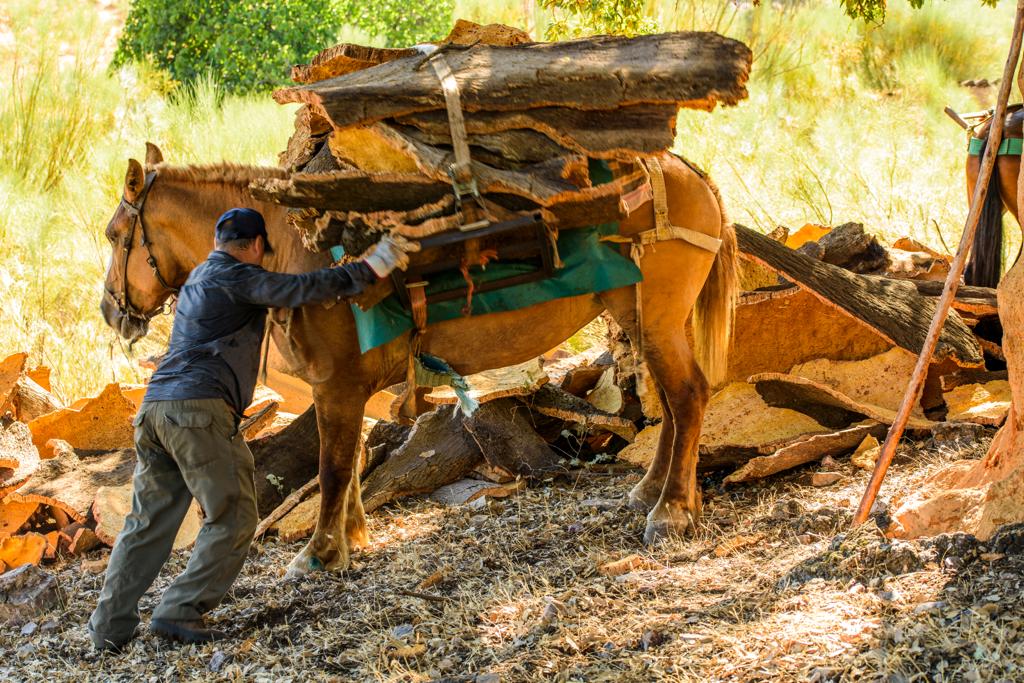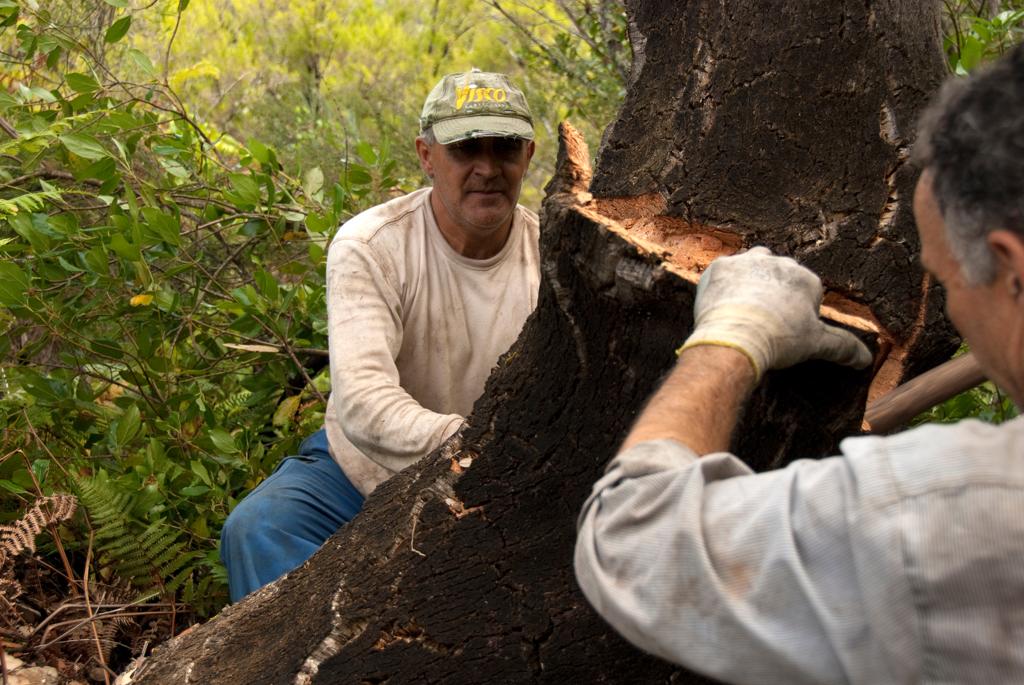There are over 2.3 million hectares of cork oak forest. Half of the world's production comes from Portugal
Few are wine lovers who, after enjoying the contents of a bottle, keep the stopper; maybe just collectors or, simply, those who want a palpable memory of a liquor that impressed them in a certain moment. Before reaching under the sommelier’s corkscrew, the cork stoppers had a real odyssey, which began in a forest in Portugal, Italy, France, Morocco, Tunisia or Algeria.
Experts of an ancient process
In order for the cork to be harvested and then processed in the form of a stopper of a bottle of wine, a complex process is needed, which stretches over decades.
Harvesting cork oak bark (Quercus Suber L) – an ancient method – begins in mid-May and lasts until the end of August. No less than a quarter of a century requires a trunk to begin to produce cork and, consequently, to become profitable – here it should be mentioned that cork oak is the only tree with renewable bark. Measuring the trunk is one of the methods by which it can be determined if a cork oak is ready for harvesting: the circumference of that trunk must be about 70 centimeters, 130 centimeters above ground level. The harvesting process, for each oak tree, can stretch, on average, over a period of 150 years.
Because the process of detaching the cork from the oak trunk is a delicate one, which requires specific skills, the companies hire experts to carry out this operation. They are known by the generic name of decorticadores.If we think about how long to wait for a single harvest and how precious these oaks are, we should not be surprised that harvesting cork is the highest paid agricultural work in the world.
Desboia, the first harvest
The first harvest from a cork oak received a specific name: : desboiaIt is a difficult process, because the oak tree initially produces a raft with an extremely irregular structure, difficult to handle even by the most experienced decorticadores.. The inferior quality of the virgin cork – as it is called the result of the first harvest – does not allow it to be used in the manufacture of corks for wine bottles, being usually used for floors or insulation.

Nine more years of waiting
About the second harvest can be talked about only nine years after the harvesting of the virgin cork,so about 35 years after planting the tree. Now the oak produces a less hard cork, known as the secondary cork.But, surprise, this is not used in the manufacture of plugs either.
De abia de la a treia recolta – deci la mai biune de patru decenii de la plantarea stejarului – se poate vorbi de asa-numita amadiaof breeding cork.. This is ideal for the manufacture of plugs that meet ideal qualities for the wine industry, the structure of the material is now regular, with a smooth exterior and interior.
Forests of the Western Mediterranean
The third harvest is the moment from which the cork oak will provide good quality cork every nine years. The tree will produce, on average, 15 harvests of bark, throughout its bicentennial existence.
The largest areas of cork oak forest are located in the western Mediterranean countries: Portugal, Spain, Italy, France, Morocco, Tunisia and Algeria.
At the moment, there are over 2.3 million hectares of cork oak forest in the world. Almost a quarter of this area is in Portugal, so it should not be surprising that half of the world’s cork production is Portuguese.
Each ton of material harvested from an oak tree can provide, on average, 66,700 cork stoppers.






